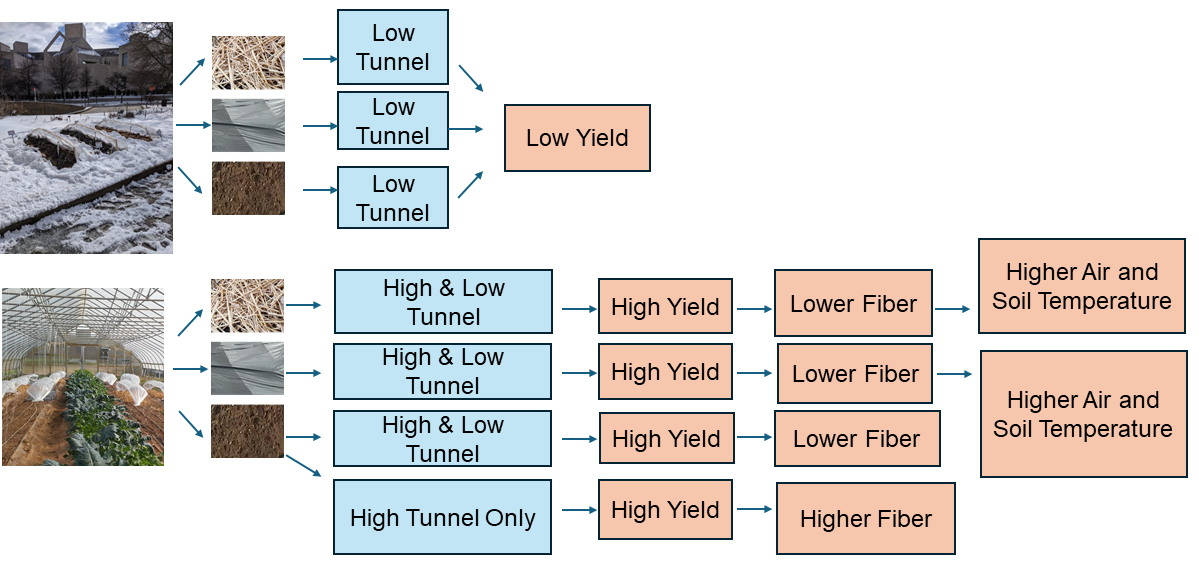
Published 2024-04-04
Keywords
- Dietary fiber,
- hoop house,
- mulch,
- nutrients,
- season extension
- small-scale farming,
- urban agriculture ...More
How to Cite
Copyright (c) 2024 Matthew Richardson, Caitlin Arlotta, Lillie Monroe-Lord

This work is licensed under a Creative Commons Attribution 4.0 International License.
Funding data
-
National Institute of Food and Agriculture
Grant numbers 1014999 -
National Institute of Food and Agriculture
Grant numbers Hatch Multi-State Research Capacity funding program (NE 1939)
Abstract
Kale, Brassica oleracea L. var. acephala, is an important urban crop for human health and may potentially be grown year-round even in a temperate climate. We investigated black plastic and straw mulch compared to bare soil cover in low tunnels at 10 urban garden sites and in low tunnels within a high tunnel in the USA to ascertain the influence on yield and nutrients of Red Russian kale, soil temperature, air temperature, weed pressure, and aphid abundance. Kale had low yield in garden sites, likely because the outside environment was too cold for low tunnels to gain and retain heat. Cultivating kale in a high tunnel resulted in good yields, especially when paired with a low tunnel and plastic or straw mulch, which resulted in the highest air and soil temperatures. The amount of minerals in plants within the high tunnel largely did not vary across combinations of low tunnels and ground covers, except for copper and sulfur, which were lowest in plots with no low tunnel or ground cover. Also, dietary fiber was higher when no low tunnel or ground cover was used compared to plots with a low tunnel and no ground cover. Weeds were suppressed by straw and black plastic mulch, but none of the ground covers influenced aphid abundance. Overall, our work demonstrates that Red Russian kale can be grown in a temperate climate during winter with some combinations of tunnels and ground covers.




